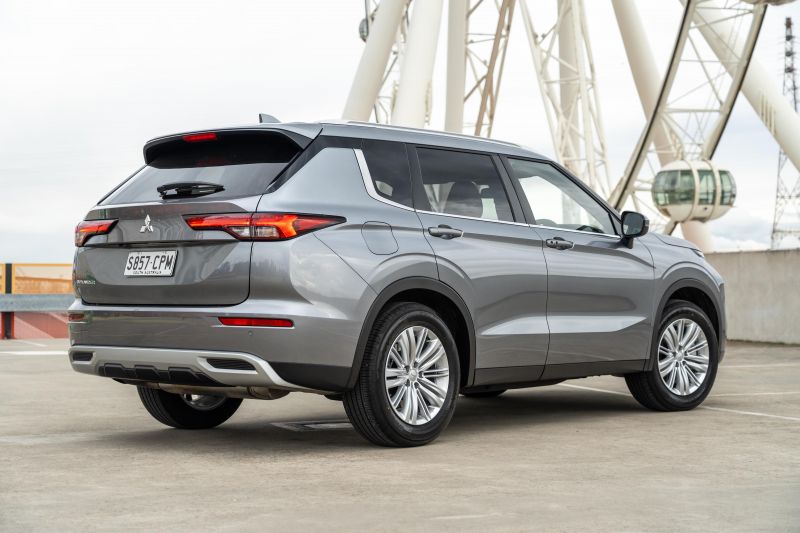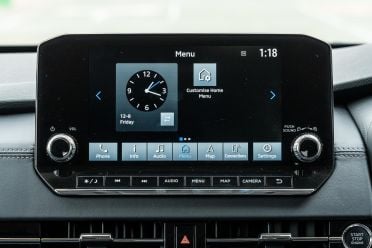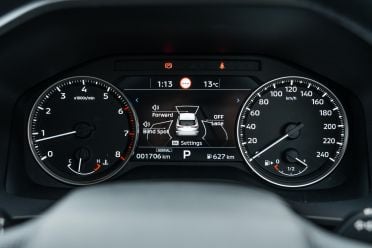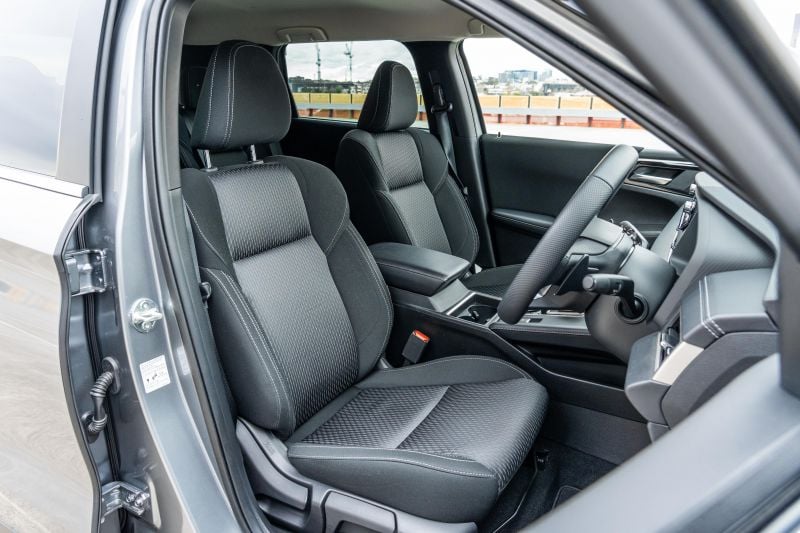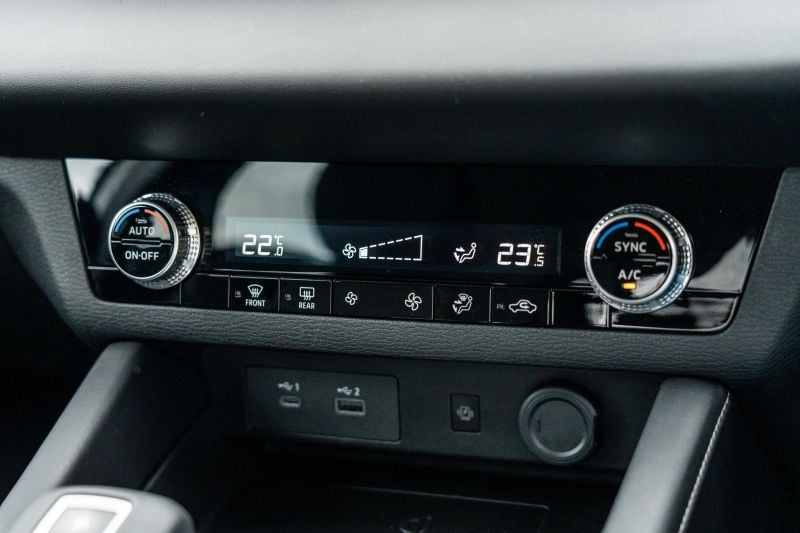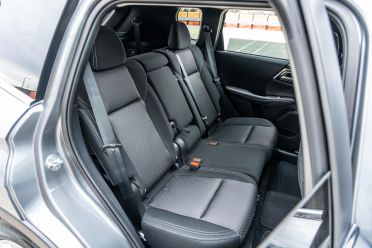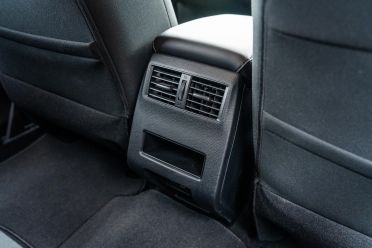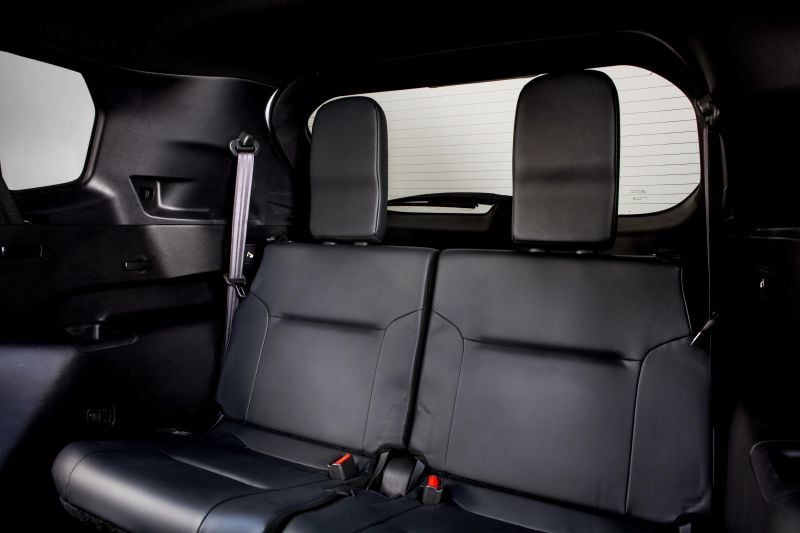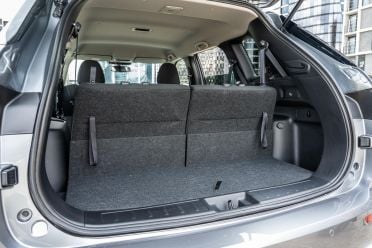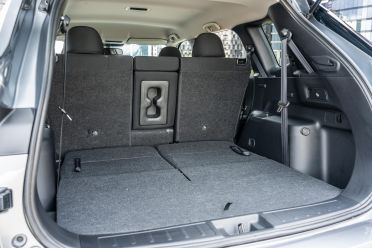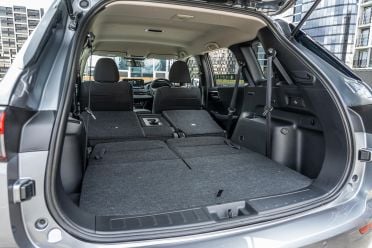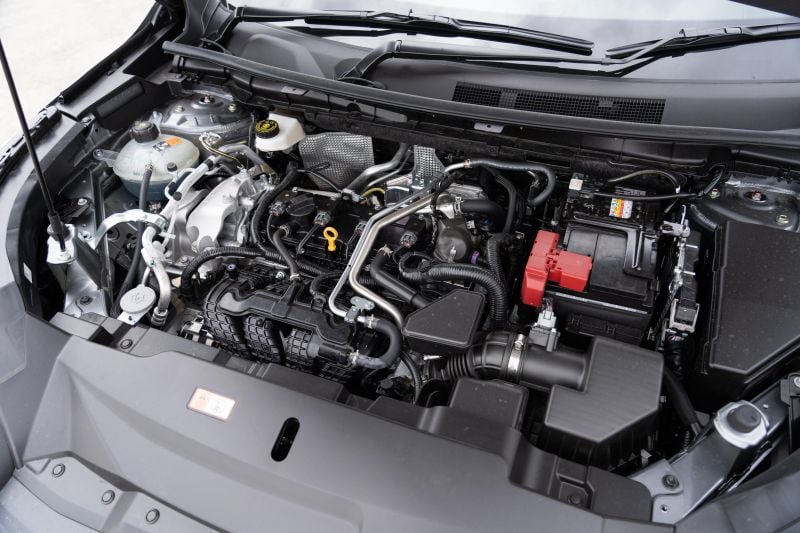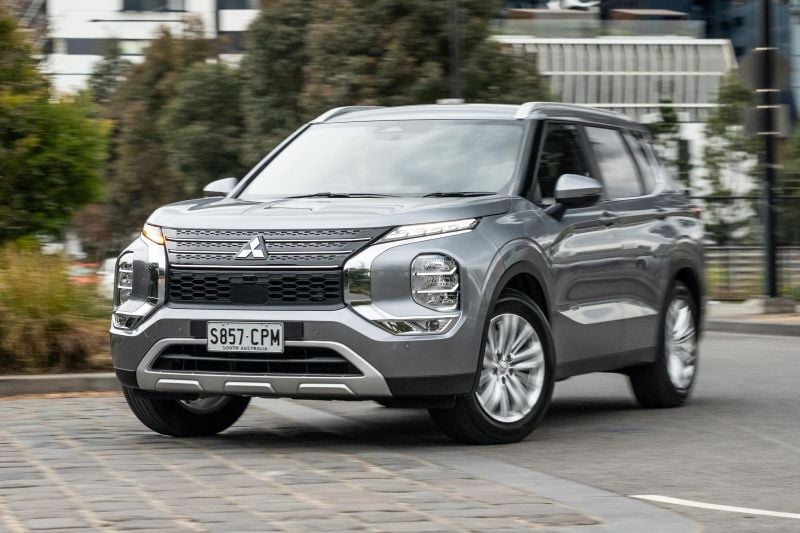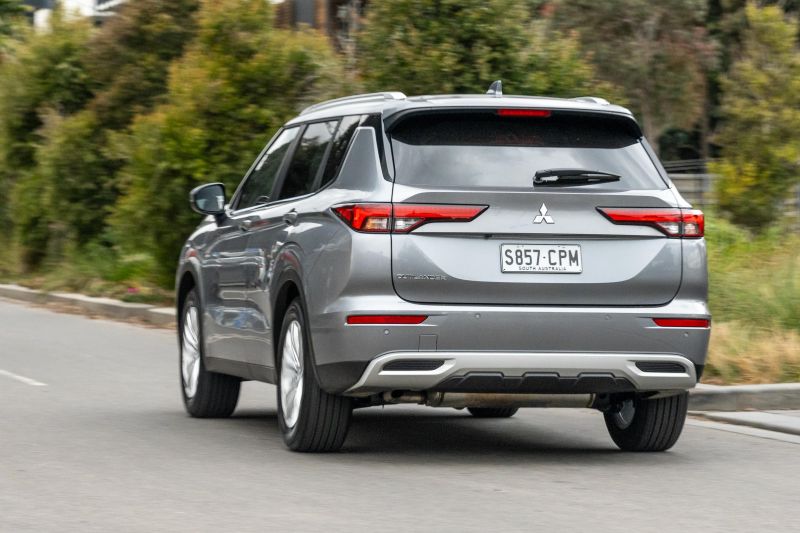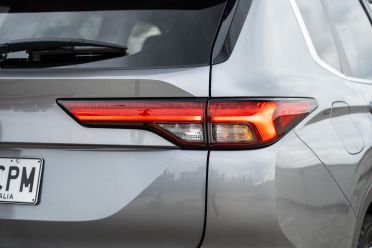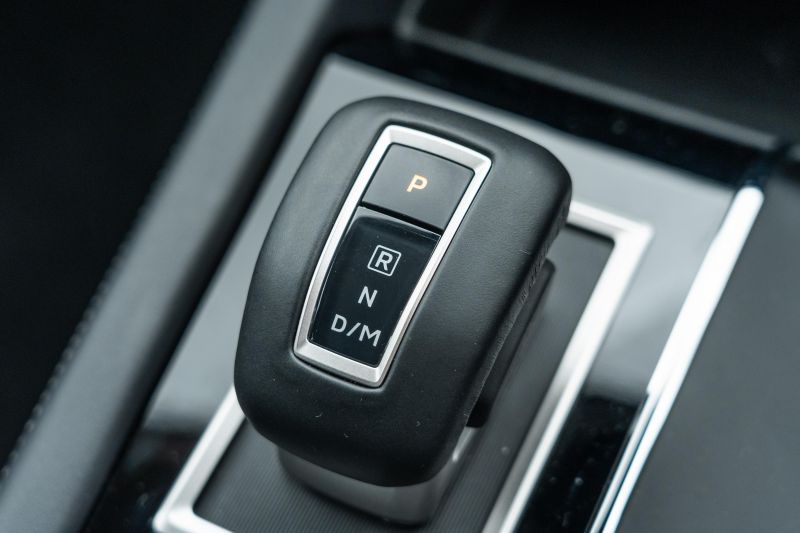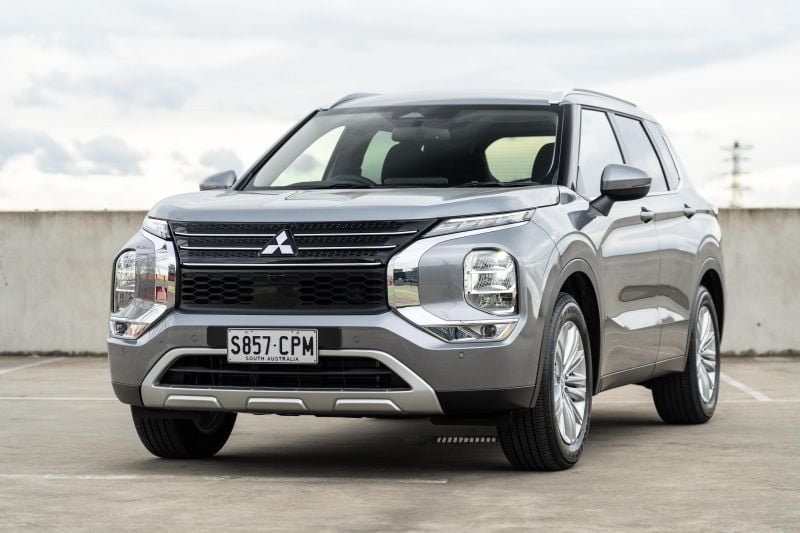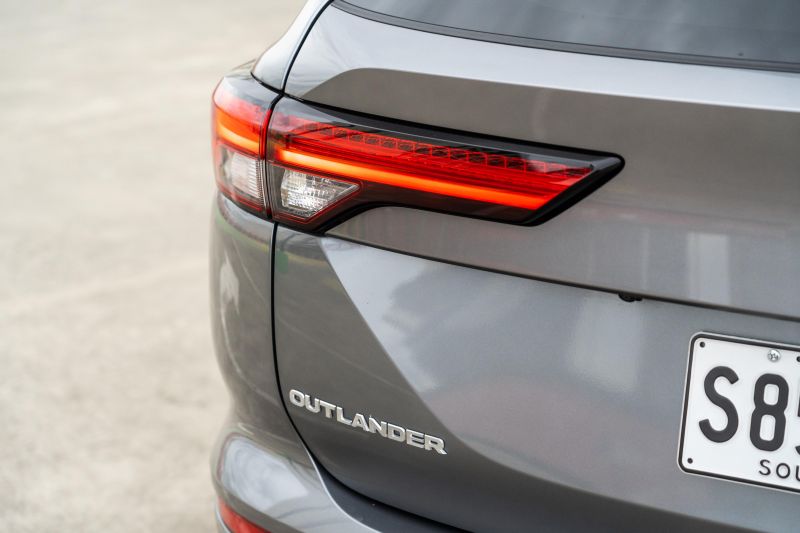Now into its third generation, the Mitsubishi Outlander is all grown up.
It’s bigger, packs more technology, and features a steeper price tag than ever before, as Mitsubishi looks to move upmarket and take on the madding mid-sized SUV crowd.
Mitsubishi hasn’t forgotten about value-oriented buyers in the transition, though.
The base Outlander ES and LS are still sharply priced relative to their rivals, and pack plenty of standard equipment.
They’re also available in seven-seat guise with a choice of front- or all-wheel drive, which is unique among more -oriented competitors.
On test here is the 2023 Mitsubishi Outlander LS FWD 7-seat, one step above the base model. Does the value equation stack up?

How much does the Mitsubishi Outlander LS cost?
The Outlander LS sits one step above the base level, with a sticker price of $39,490 before on-road costs.
That equates to a drive-away price of $43,700 in NSW, according to the Mitsubishi Australia website.
The petrol (a PHEV is also available) range kicks off at $35,990 before on-roads for the LS five-seat front-wheel drive, and extends to $52,490 before on-roads for the Exceed Tourer.
What is the Mitsubishi Outlander LS like on the inside?
The Outlander is still one of the more budget-oriented mid-sized SUVs, and it feels it behind the wheel. It’s big and airy, but the grey cloth seats, plasticky climate control dials, and trip computer readout give away the fact this is close to a base model.
The fundamentals are good up front. The manually-adjusted driver’s seat is supportive, and the driving position is more accomodating than was the case in the last Outlander.
With its leather trim and silver highlights, the steering wheel feels like a quality item; the same can’t be said for the brittle indicator stalks.
Being one of the newer models in the class, it would be reasonable to expect the Outlander to be a technology standard-setter. In reality, it offers a full feature set but doesn’t look or feel particularly up-to-date.
Its graphics are blocky and basic, and it’s already laggy at times. Wireless Apple CarPlay is its saving grace, allowing you to sidestep the factory software without removing your iPhone from your pocket. Android users still need to plug in, however.
It’s a bit disappointing Mitsubishi didn’t do more to move the game forward, because a big screen isn’t enough to stand out in 2022.
The trip computer between the simple dials offers plenty of information, but it’s busy and the graphics look basic compared to what Volkswagen offers. Mitsubishi does offer a digital instrument cluster on higher-end models.
At least Mitsubishi hasn’t abandoned proper climate controls, so you don’t need to go digging into the touchscreen to adjust your temperature and fan speed.
There’s plenty of storage up front, from the dual cupholders to the wireless charge pad at the base of the dashboard.
The door pockets will happily swallow a water bottle, and there’s plenty of space for road trip snacks in the underarm storage bin.
The Outlander’s chunky exterior dimensions mean there’s solid legroom in the second row. You’ll fit full-sized adults behind full-sized adults, and the bench is broad enough to accomodate three teenagers without too much stress.
Legroom with the rear seats in place is slightly above average for the class. The stadium-style second-row bench means vision is good for small kids, but it also means long-legged passengers will feel as if their knees are butting into the top of the seat.
You get air vents back there, and the centre seatback folds down to create an armrest. Unfortunately when you fold it there’s nothing stopping bags from the boot sliding into the cabin. Most rivals feature fold-down armrests without forcing you to make the same compromises.
Rear-seat passengers get air vents and two USB ports, but no temperature controls.
Access to the third row is tight, despite the second-row bench sliding and tilting forwards. Once there, headroom is quite disappointing, and legroom is tighter than in rivals such as the Volkswagen Tiguan Allspace.
Third-row passengers don’t get air vents, although they do get a single cupholder cut into the plastic moulding over the wheel arches.
It’s also worth noting how small the rear window is relative to its rivals – it’s like a porthole.
Erecting or lowering the third-row seats is simple, but the headrests aren’t integrated. Instead, you need to install them when you want to use the seats, and store them with the cargo beneath the floor when you aren’t.
There’s a claimed 163L of boot space with the third-row seats in place, expanding to 478L with them folded.
That expands again to 1461L with them folded. The boot itself is the best of the three cars. The floor is perfectly flat, and there are no awkward steps or holes back there.
The boot lid is massive and isn’t power assisted, but it’s light enough to open and features a handle that should make it easier for short owners to shut it.
What’s under the bonnet?
Power in the non-hybrid Outlander comes from a 2.5-litre naturally-aspirated four-cylinder petrol engine. It makes 135kW of power and 245Nm of torque, and is sent to the front wheels through a CVT.
All-wheel drive is offered on this model, although you’ll have to pay an extra $2500 for the privilege.
Claimed fuel economy is 7.7 litres per 100km, and the car has a 55L fuel tank. It drinks 91 RON regular unleaded.
How does the Mitsubishi Outlander LS drive?
The last Outlander was solid but unremarkable on the road, and the new car follows in those tyre tracks.
It’s more refined than before though, with a big-car feel that’ll endear it to the sort of people who covet a commanding view of the road ahead.
That’s not to say it’s a truck. With light steering and decent all-round visibility, it’s an easy car to thread through tight city streets or underground carparks despite its size, and the reversing camera offers a decent view of what’s behind you.
It’s hard to understand why it’s mounted slightly off-centre, given this is close to a brand-new car, but it doesn’t warp your perspective too much.
As you’d expect of a low-power, non-turbo engine mated with a CVT, the powertrain in the Outlander is adequate but nothing more. In normal driving it’s unobtrusive, and generally operates in a band between 2000 and 3000rpm where you don’t get much in the way of noise or vibrations.
Ask for more than gentle progress and you get more revs and more noise, but not all the much more of a shove in the back. It needs to rev higher than turbocharged competitors to deliver its performance, which means it’s noisier and less refined.
Although the CVT gamely tries to mimic a torque converter by slurring through fake gear shifts under heavy throttle, there’s nothing pleasant about the way the Outlander delivers its performance with two people on board, let alone seven.
We’ve criticised the ride quality on more expensive models with bigger wheels, but it’s pretty good on the LS. It floats over small city bumps nicely, and never feels busy like some of its more expensive range-mates.
That relaxed suspension tune makes the car a long-legged cruiser for the most part, although it does crash into sharp bumps and expansion joints harder than it really should. It can also float over crests and dips, taking a moment to settle.
Noise suppression is impressive at 100km/h on average country roads, and the engine is settled at a cruise.
Mitsubishi’s suite of driver assists is solid, but not standout. The adaptive cruise control is smooth and smart, but the lane-keep assist system is quite relaxed and won’t actively centre the car if you aren’t bumping into the white lines.
This is one the newest mid-sized SUVs out there, so it’s hard to understand why technology rolling out elsewhere in the segment isn’t offered.
What do you get?
Outlander ES highlights:
- 18-inch alloy wheels
- 7.0-inch trip computer display
- 9.0-inch touchscreen infotainment system
- Wireless Apple CarPlay
- Wired Android Auto
- Dual-zone climate control, second row vents
- 40/20/40 folding second row
- Trailer stability assist
- Hill start assist
- Hill descent control
Outlander LS adds:
- Privacy glass
- Rolling cargo blind
- Leather-wrapped steering wheel, shifter
- Keyless entry and start
- Wireless phone charging
- USB power for rear passengers
- Auto-dimming rear-view mirror
- Heated, power-folding door mirrors
- Automatic headlights with auto high-beam
- Silver exterior garnish, roof rails
- LED fog lights
- Rain-sensing wipers
Is the Mitsubishi Outlander LS safe?
The new Outlander wears a five-star ANCAP safety rating based on tests carried out in 2022.
The received an adult occupant protection rating of 83 per cent, a child occupant protection rating of 92 per cent, a vulnerable road user protection rating of 81 per cent, and a safety assist rating of 83 per cent.
Standard safety equipment includes:
- 8 airbags incl. front-centre and driver’s knee
- Autonomous emergency braking (AEB)
- Blind-spot monitoring with braking assist
- Driver attention monitoring
- Lane departure warning
- Lane keep assist
- Emergency lane change warning with auto braking
- Adaptive cruise control
- Reversing camera
- Front and rear parking sensors
- Traffic sign recognition
Outlander LS adds:
- AEB in reverse
- Rear cross-traffic alert
How much does the Mitsubishi Outlander LS cost to run?
The Outlander has a five-year, 100,000km warranty as standard, but it’s extended to 10 years and 200,000km if you service in the Mitsubishi dealer network using its capped-price service program.
Maintenance is required every 12 months or 15,000km, whichever comes first.
The first five services cost a combined $995 on the Mitsubishi capped-price service plan.
CarExpert’s Take on the Mitsubishi Outlander LS
The Outlander is a decent family hauler, but we’ve a sneaking suspicion it should be better again.
It offers plenty of equipment at a sharp starting price, and delivers on the promise of part-time third-row seating, but the interior technology is fine rather than impressive, and the way it’s packaged leaves a bit to be desired.
Throw in a petrol engine that’s merely serviceable with two people, and generously could be described as hard-working with seven on board, and the Outlander is solid rather than special.
Solid isn’t necessarily a bad thing, though. If you want a no-frills family-hauler, the Outlander delivers with its long warranty and affordable servicing.
The LS shapes as a smart buy, given it features everything you need at a reasonable price. Although the more luxurious Aspire is tempting, the LS with its smaller wheels is the smoother, smarter choice.
Click the images for the full gallery





